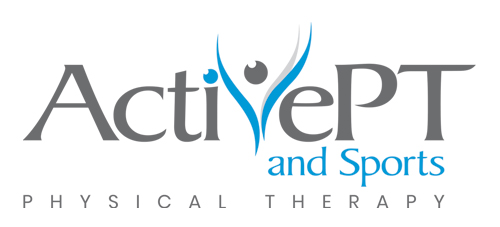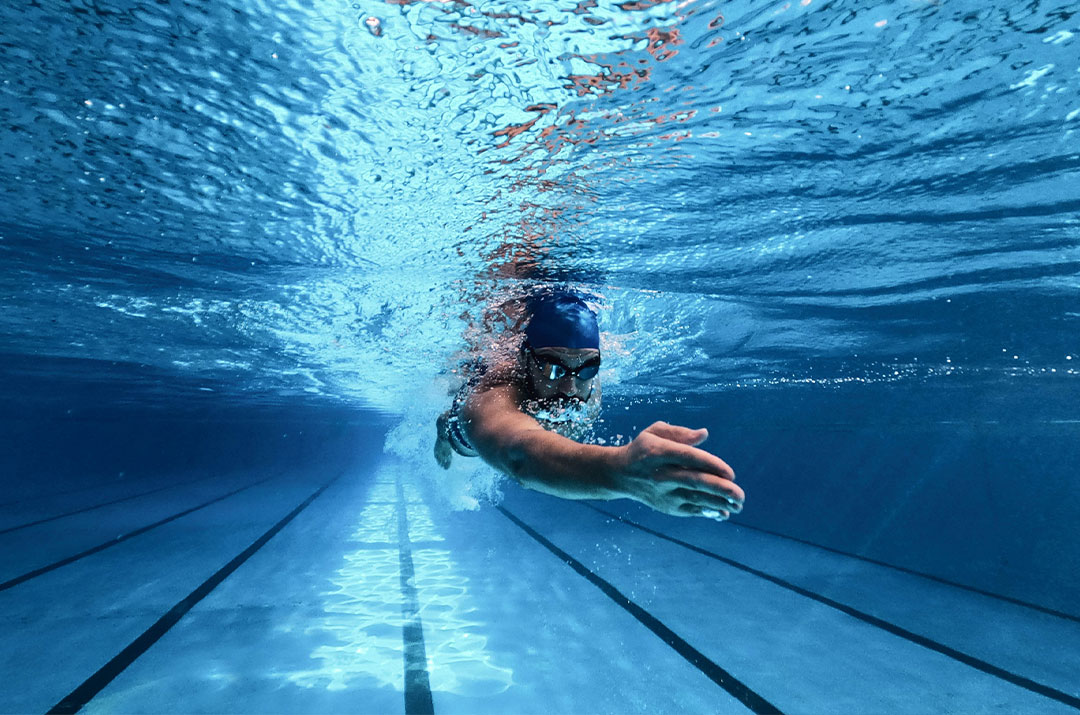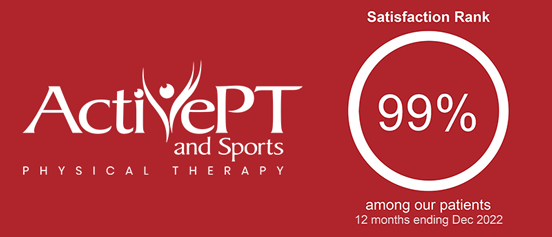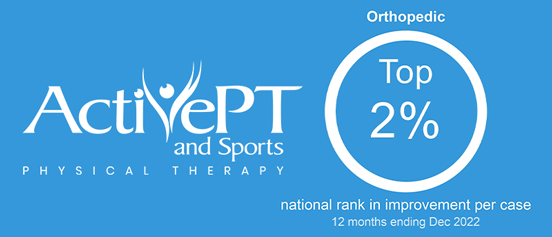By Courtney Hilmanowski, DPT, OCS, SFMA
Competitive swimming involves a complicated relationship between the athlete’s strength,technique, movement in the water. On average, a mid-level competitive swimmer will complete 13,000 shoulder revolutions per week during peak training periods! To reduce the risk of shoulder injury, a swimmer’s technique must be sound and efficient so as to not waste any extra effort. Regardless of the stroke performed in competition, swimmers will spend 75% of their training volume swimming freestyle. To better understand freestyle, we will break down the stroke into its phases.
Hand Entry
This is the beginning of the stroke as the hand enters the water and initiates the first portion of the pull underwater. Mechanics are most critical at this point of the stroke as the torque placed on the shoulder from the resistance water is at its highest.
Correct hand entry technique is:
- Finger tips entering the water first
- Hand entry occurs in front of your head
- Hand entry should be directly in front of the shoulder
Common mistakes that can limit efficiency and place the shoulder in an impinged (pinched) position include:
- Thumb entering the water before the fingers
- Hand entry beside your head rather than in front of your head
- Hand entry in front of your head instead of crossing the midline crossing midline.
These faults can cause unnecessary stress on the shoulder, and waste valuable time and energy.
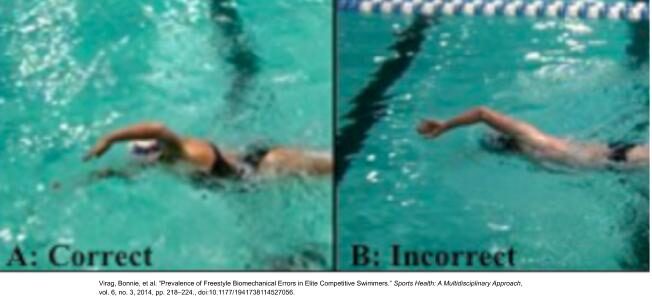
Catch Phase
This phase continues from the hand entry, and finishes with the hand next to the hip. This is the “pull” phase where the arm is completely under water. Correct catch phase form is a shallow s-shaped movement as you pull and a high elbow position. The most common biomechanical fault during this phase is a dropped elbow, which places the muscles that propel the body forward at a mechanical disadvantage. This is where the power of the stroke is generated or lost. Properly harnessing the force of your muscles can increase efficiency in the water.
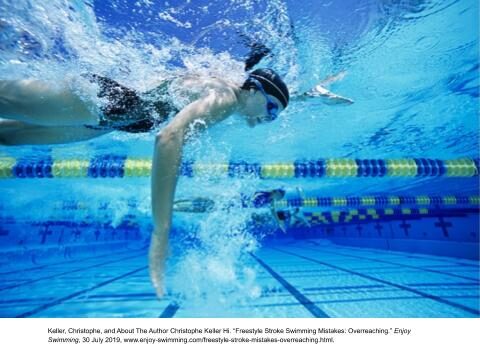
Recovery phase
The recovery phase completes a full stroke cycle and returns the arm to the starting position at hand entry. During phase, the hand is out of the water.
Correct mechanics during the recovery phase include:
- Elbow higher than the wrist
- Rolling your body at least 45 degrees
If the elbow drops below the wrist, the shoulder is placed in an impinged position and can potentially lead to overuse injuries. If the swimmer is not achieving the correct amount of body roll, they will experience more drag and expend more energy to propel forward.
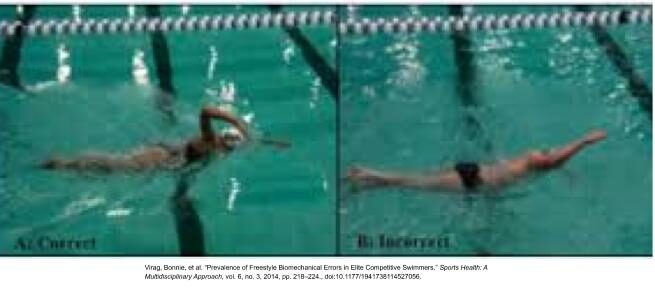
[su_youtube url=”https://www.youtube.com/watch?v=Uszb7o09Etg”]
Interested In A Stroke Analysis?
If you are having pain with swimming and not sure if your stroke is contributing to your pain, our swimming expert, Courtney Hilmanowski, has years of experience breaking down the details of a swim stroke to prevent injury and improve your efficiency in the water. As a high level competitive swimmer, she will provide you with drills and tips to implement that day to get you swimming faster, and with less pain! Click here to schedule an appointment.

Courtney Hilmanowski, DPT, OCS
Courtney Hilmanowski DPT, OCS is a swimming and shoulder specialist at ActivePT in Rochester, MN. She is an elite swimmer who understands chasing big goals in the clinic and the pool. Her years as a Division 1 swimmer for the University of Minnesota and Wisconsin HS State Record holder in the 500 free, give her an advantage in understanding your mindset, goals and training schedules. As a Doctor in Physical Therapy, her understanding of strengthening principles and biomechanics allow her to improve a swimmer’s stroke efficiencies and make you faster. She’ll design specific programs to increase strength, speed and reduce your risk of injuries.
